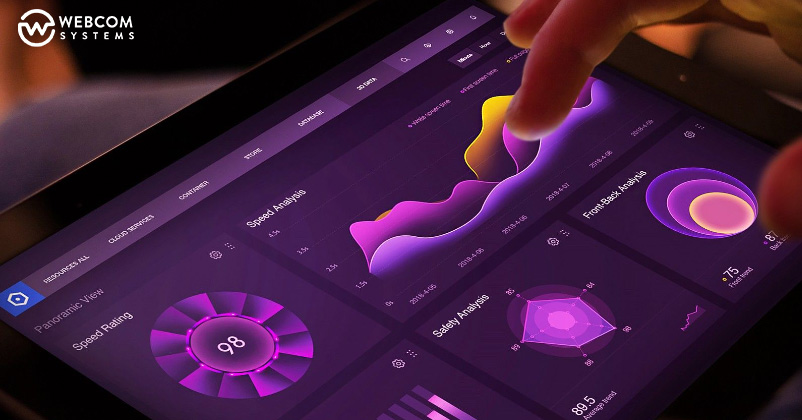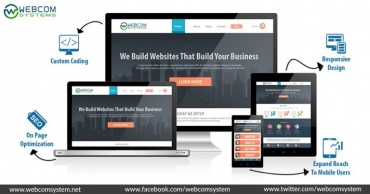An engaging user interface can have a vital influence on the progress of your web application. The provocation for web designers believes about how visitors are navigating the UI(user interface) and which moves they suppose to follow.
This includes assessing the skills and technical know-how which they can anticipate from their users.
We will give you a few tips on how to outline an engaging UI and assure a good user experience.
#1. Intuitive Navigating
The most significant thing about a good UI is that it provides the reader with the possibility to navigate effortlessly and intuitively.
But what does navigating intuitively even mean?
Users should be able to use the application without having to spend a long time searching around. The question “how do I do this?” should therefore not even come up.
On the other hand, there are things that have been acquired by cultural conditioning: You know what a hamburger icon indicates, and you have seen by now, that many images include “ghost links” that drive to articles.
The inquiry is, therefore: how can I practice things that have been learned by cultural conditioning to allow smooth navigating? Design modifications are also always strong when they are followed with already stabilized patterns.
Non-intuitive navigating is the severe opposite. It always seems when the design is generated in contrast to culturally learned things.
Consider about this for instance:
Why are the buttons so complicated? Because they are conceived in a non-instinctive way.
For one thing, the font of the “No” button is a lot huger, proposing that this is the message that is very important.
Also, picking the colour red for a confirming operation is notably misleading, as we have discovered to unite this colour with activities that stop something.
The design is therefore in contradiction to the expectations a user has of specific actions. Text and design should always strengthen each other rather of confronting each other.
#2. How Do Users Navigate Your UI?
Before you commence to create a user interface, consider how your users will navigate with it. Which gestures or interactions will they use, particularly on touch-based smartphone devices.
– Should your users click a button?
– Swipe from the left or the right?
– Are you offering a drag & drop function?
– Are there forms that have to be filled out?
These are all choices that you should consolidate into your concept. The inquiries you should then ask yourself through the conception of your idea are the reason, why web designers are shifting from static design ideas to interactive prototypes and create experiences.
#3. Anticipate Mistakes
People make errors, but they shouldn’t (ever) have to bear the outcomes. There are two methods to help reduce the result of human error:
– Prevent mistakes before they happen
– Give ideas to fix them after they occur
You see a lot of mistake-prevention techniques in e-commerce and form design. Buttons continue inactive till you fill out all fields.
Forms identify that an email address hasn’t been recorded suitably. Pop-ups ask you if you actually want to drop your shopping cart (yes, I do, Amazon—no matter how much it may hurt the poor thing).
Anticipating errors is usually less frustrating than working to fix them after the event. That’s because they happen before the gratifying feeling of finish that comes with clicking the “Next” or “Submit” button can set in.
That said, seldom you just have to let setbacks happen. That’s when particular failure reports actually evolve into their own.
When you’re addressing error messages, make certain they do two things:
Describe the problem. E.g., “You said you were born on Mars, which humans haven’t colonized. .Yet”
how to fix it. E.g., “Please enrol a birthplace here on Earth.”
Note that you can use a page from that same book for non-error conditions.
For example, if I delete anything, but it’s feasible to restore it, let me know that with a line of text like “You can always restore erased things by moving to your Trash and entering restore.”
The origin of anticipating user error is called the poka-yoke faith. Poka-yoke is a Japanese word that interprets to “mistake-proofing.”
#4. Give feedback—quick
In the real world, the environment provides us with feedback. We address, and others answer (usually). We prick a cat, and it hums or buzzes (depending on its moodiness and how much we engulf at cat scratching).
All too often, digital interfaces fail to give much back, leaving us wondering whether we should reload the page, restart the laptop, or just fling it out the nearest available window.
So present me that loading animation. Make that button pop and snap behind when I tap it—but not too much. And give me a virtual high-five when I do anything you and I agree is awesome. (Thanks, MailChimp.)
Just make sure it all happens fast. I think, 3 seconds is enough to cause a bounce.
If a page loads in under 5 seconds, don’t display a progress bar, as it’ll really make the loading time seem longer.
Rather, use a visualization that doesn’t indicate progress, like Mac’s disgraceful “pinwheel of death.” But not that. If you do use progress bars on your site, thought to try some visual tricks to make the load seem faster.
#5. Don’t Overlook Standards
Being extremely creative types, designers serve to enjoy to reinvent things—but it’s not always the greatest belief.
Why? As a revised version of a standard interaction or interface appends “cognitive load”: it presents people consider again about a process they’ve already learned. Apparently, you can reinvent the wheel all you need—but only if it really enhances the design.
This rule of thumb explains why Google Docs’ menu bar features nearly all the same options as Microsoft Word’s before Vista.
It also describes why Pocket had to modify the position of the archive button in their Android app a few years back.
Up till fall 2013, the archive button was at the head left of the screen—right where Android design specs said the “Up” button should be.
Pocket needed to concentrate users on the reading practice, and not counterfeit a current hardware control, but the irregular placement prompted new users to unintentionally close and archive the article they were reading, rather than just turning to their reading list as expected.
That tiny difference “increased the possibility [new users] would proceed using Pocket from this period onwards by 23%.”
Wrapping Up:
For an engaging UI, it’s necessary to design an interface that is simple to learn. It can be done by utilizing standardized icons, providing feedback after actions, and by intuitive user design.
Your UI should be simple to understand and create using the application fun without having to consume a long time mastering how to use it.
Recommended Read: 8 Amazing Web Design Trends for 2017




